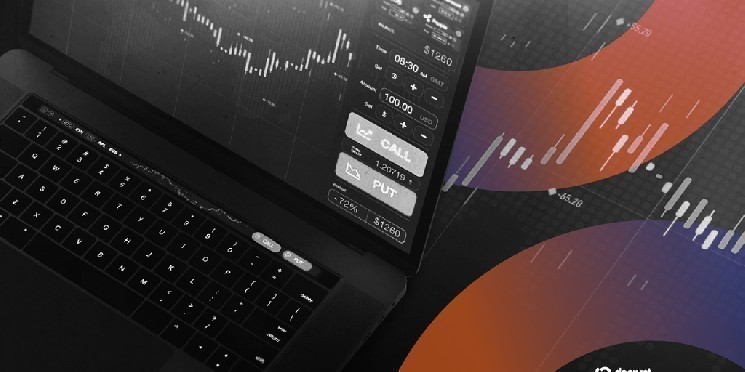By Terrence Qiu
1. Five Core Questions VCs Ask (Due Diligence Checklist)
Are the assets legitimate? Are there third-party verifiable lists/certificates (bond numbers, custody gold bar certificates, accounts receivable contracts, carbon credit certification documents, etc.)? Are independent audits and on-chain disclosures implemented? Is compliance guaranteed? In what jurisdiction is the issuance/custody/exchange located? Are the required licenses or SRO status in place (e.g., RIA, trust, EU MiCA, Swiss VQF, etc.)? Are transfer restrictions and KYC/AML procedures incorporated into the contractual process? Are scale and returns sustainable? Consider the current AUM/TVL, multi-platform distribution capabilities, liquidity sources, gross/net interest margin structure, and a replicable expansion path. Is risk control engineered? Beyond custody and auditing, are there on-chain whitelists/blacklists, sales restrictions/freezes, automated reconciliation and alerts, oracles, and data feedback? Are the team and capital backing aligned? Do the core members understand finance, compliance, and on-chain? Does the company have the backing of top institutions/strategic investors (not just funding, but also resources/channels/clients).
2. Summary of Two Recent Case Studies
Case A: Huma Finance (PayFi: a dedicated RWA network for payments and financing)
1) Team and Lineage
Co-founder Richard Liu : Former head of engineering at Google (led 0→1 products such as Google Fi), his startup Leap.ai was acquired by Facebook in 2019; later he served as CTO of EarnIn (a leading US fintech company) - he clearly has a dual background in technology and finance.
Co-founder Erbil Karaman : former head of growth at Facebook, director of consumer products at Lyft, and later Chief Product Officer (CPO) at EarnIn , with a focus on growth and financial user products.
Investors include Distributed Global, Hashkey Capital, Folius Ventures, Stellar Development Foundation, and TIBAS Ventures. Arf, the company's largest client, was acquired in 2024. Arf is a cross-border clearing and settlement platform and a revolving credit platform. It is a member of the Swiss VQF self-regulatory organization (AML/CFT compliance) and has long-standing collaborations and case studies with Circle, Solana , and Scroll+ .
2) Project Highlights
In September 2024, a $38 million funding round was announced: approximately $10 million in equity ; approximately $28 million in income-generating RWA assets entering the platform (a hybrid structure of "capital + asset allocation on the platform"), with $10 million provided by the Stellar Development Foundation (SDF) ; and tokenized asset subscriptions on Scroll were open only to accredited investors for a period of time. → This type of "partial asset allocation" structure typically reflects investors' bets on the asset's yield curve , rather than simply on equity valuation.
3) Summary of Operations and Risk Control Measures
Public statement after the merger: Cumulative payment financing transactions exceeding US$1.8 billion have been processed ; the company is positioned to "financialize the time value of payment itself" and emphasizes turning real payment receivables/settlement turnover into a low-risk, short-duration asset pool.
Arf operates under the supervision of the Swiss VQF (Anti-Money Laundering Self-Regulatory Organization) and has a mature case of country-specific compliance clearing path for USDC ; this compliance foundation provides the prerequisite for Huma's "cross-border amplification".
4) Summary of Compliance Path
Through the combination of Swiss SRO (VQF) + US/Asian payment network partners , we prioritize penetrating the underlying assets of ETFs such as "cross-border payment working capital credit" (short-term, revolving, B2B receivables/settlement with a historically low default rate).
Deep cooperation with Solana/Stellar , superimposing the qualified investor threshold on the Scroll (EVM ZK) side, forms a dual-track system of "payment performance on the public chain side + qualified investor asset issuance on the EVM side".
5) Research and Investment Perspectives
Strengths : The team has strong experience in financial/payment products; Arf's VQF and USDC practical cases provide sufficient compliance and settlement persuasiveness; the mixed entry of "capital + asset allocation" shows investors' preference for real sources of income (rather than just staking tokens).
Focus :
Will asset expansion increase credit and geographic risks (KYC/AML and sanctions screening consistency across multiple jurisdictions)?
The liquidity constraints of the "Qualified Investor" window (restricted secondary transfers) and whether it will be extended to a larger investor base in the future.
Case B: Plume Network (Encrypted Protogenesis Link + Backend for RWA)
1) Team and Lineage
Co-founded by Chris Yin, Teddy Pornprinya, and Eugene Shen (2023/2024), headquartered in NYC; team members come from Coinbase, dYdX, JP Morgan, Robinhood Crypto, etc. In May 2025, co-founder Eugene Shen unfortunately passed away (the company released an obituary and public statement).
Financing: US$10 million in seed round in May 2024 (led/participated by Haun Ventures, Galaxy, etc.); received a "seven-figure" strategic investment from Apollo Global Management in April 2025 (the exact amount was not disclosed); and announced a total financing of approximately US$30 million in cooperation with multiple traditional/crypto institutions.
The launched mainnet already includes more than 50 dApps, covering a variety of areas, from tokenized gold, private enterprise equity, durian farms, mineral rights to tuk-tuks, and more.
2) Project Highlights
Apollo's entry is a strategic ("seven-figure") ticket : conventionally, it places greater emphasis on resource synergy and integration with the asset management ecosystem rather than short-term financial returns. Meanwhile, Plume announced a $25 million ecosystem fund in January 2025, pointing to a platform-based approach of "attracting investment into the blockchain + supporting projects."
3) Summary of Operations and Risk Control Measures
Public data after the mainnet launch in June 2025 : RWA TVL/AUM exceeds $200 million , with over 400,000 addresses, which have completed over 55 million transactions on the mainnet, and an average daily transaction volume of approximately 6 million . The ecosystem integrates Curve, Morpho , and multiple RWA issuers (including some traditional asset management brands).
Productize the compliance module : Reduce the integration costs for issuers and institutions through on-chain components such as whitelists, transfer restrictions, information disclosure, and KYC/AML processes, with the intention of becoming the "compliance module/clearing and settlement layer of RWA."
4) Summary of Compliance Path
Disclose publicly that it maintains policy communication with U.S. financial regulators , the Hong Kong Monetary Authority , etc.; and uses " crypto-native experience " rather than a purely permissioned closed environment as its differentiated route.
5) Research and Investment Perspectives
Advantages :
The three-piece set of " chain + middle and back-end + ecological fund" is conducive to forming network effects in the early stage ;
Apollo’s entry is a strong signal (penetration of asset management resources and institutional clients).
Focus :
TVL and "number of holders" are derived from a combination of project and third-party statistics and require thorough verification (DeFiLlama, RWA.xyz details).
The implementation of compliance "tooling" requires the adaptation of multiple versions across jurisdictions and asset types, which may lead to increased product complexity and customization costs in the short term.
3. Track Financing Trends
First three quarters of 2024 : According to PANews/BlockWeeks, 26 RWA projects raised a total of nearly US$250 million in financing ; mainly in seed/strategic rounds, with most amounts in the millions of US dollars. The popularity has increased significantly since the second quarter .
Structurally, funding is concentrated in government bonds/treasuries, infrastructure (chain and compliance modules), and PayFi ; gold and real estate are steadily expanding; carbon assets, influenced by policies and certification standards, are experiencing significant funding volatility. Interpretation : Capital is shifting from single-site experiments to a combination of scalability, clear compliance paths, and institutional collaboration . Strategic investments (e.g., Apollo → Plume) and hybrid " equity + asset allocation " structures (e.g., Huma) will become common in 2024–2025.
Ending
RWA is no longer a "storytelling" track, but a head-on collision of financial compliance and on-chain innovation .
From a VC's perspective, the due diligence logic is very clear:
Ask about assets first - if you don't have real, auditable assets, forget it;
Looking at compliance again – without a license and a clear regulatory path, it’s difficult to secure large investments;
Then there’s the team and model – only those who understand finance, compliance, and blockchain are likely to be bet on;
Finally, it’s the narrative —the story is just the spice, not the deciding factor in whether or not to vote.
The recent cases of Huma and Plume both demonstrate the complexity of successful projects, which require comprehensive coverage. For detailed project details, please refer to the reference materials below for a more detailed interpretation. This article aims to provide a lightweight summary of information to give everyone a sense of the evolution of current on-chain compliance projects.
References
CoinDesk:Tokenized RWA Platform Huma Finance Gets $38 M Investment
Huma Finance Official Website Announcement: Huma × Arf Merger
Arf official website: VQF Compliance
Crunchbase: Richard Liu
LinkedIn: Erbil Karaman
The Block:Plume Network Raises $10 M to Bring RWA On-Chain
Binance News:Apollo Invests in RWA Platform Plume
Decrypt:Apollo Invests in Plume RWA
Plume Network Official Website: Mainnet Launch Announcement
BlockWeeks:2024 Q 3 RWA Financing Report
Disclaimer
This report is solely an analysis of blockchain and fintech trends and does not constitute investment advice. Readers should make decisions prudently based on their own circumstances and assume the corresponding risks.








